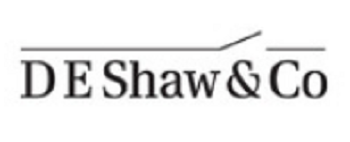D. E. Shaw Group is a large hedge fund with its headquarters located in New York City. The firm manages more than $82 billion in client assets across several pooled vehicles, or funds. D. E. Shaw has a significantly large team of financial advisor professionals totaling 348. It employs hundreds of additional individuals who help manage other aspects of the firm's functions. The firm makes investments in a wide array of areas, such as stocks, exchange-traded funds (ETFs), mutual funds and other securities.
Certain funds may be made up of certain types of investments. D. E. Shaw's hedge funds, like other similar funds, are only available to accredited investors. If this status doesn't apply to you, consider using SmartAsset's free financial advisor matching tool to speak with a local advisor.
D. E. Shaw Background
D. E. Shaw was founded in 1988 and has been in business in New York ever since. The firm also operates in places outside the city as well, though, including in Bermuda, Boston, Denver, Kansas City, Princeton, Silicon Valley, Europe and Asia. DESCO LP serves as the managing member of many of D. E. Shaw's entities. Dr. David Elliot Shaw is DESCO LP's principal owner, though other individuals hold minority stakes in the company.
This firm works with a variety of clients that invest in its funds. More specifically, these include mainly institutional investors and certain individuals.
D. E. Shaw Investment Philosophy
D. E. Shaw is known for taking a very quantitative approach to its hedge fund strategies. The firm invests globally, taking advantage of both public and private markets to help drive growth in its various funds. Strategies are similarly broad-based. They include systematic strategies, which follow quantitative, technical and computational techniques, discretionary strategies that hinge on more human and fundamental analysis and hybrid strategies that look to combine both the aforementioned systematic and discretionary approaches.
Each fund at D. E. Shaw is different, and clients can familiarize themselves with the specifics, objectives and restrictions of any fund when deciding to invest. There are numerous documents for investors to review when it comes to any specific fund, such as management agreements, offering memoranda and other governing documents.
With regards to investing, the firm looks to identify underpriced or overpriced securities and take advantage of them. They also look to reduce transaction costs while mitigating risks. The firm relies on both external and internal knowledge and research when making its investment decisions.
Fees at D. E. Shaw
Fee schedules for the funds at D. E. Shaw vary based on the specific fund. However, most funds take both a performance-based fee and an asset-based fee. The asset-based fee, or management fee, is calculated based on a percentage of the market value of a given fund. This fee may range up to 3.5% for certain funds.
Performance-based fees are calculated based on a percentage of the gain in a given fund and may be up to 40% of net profits. For more specific information about specific funds, you'll need to reach out directly to D. E. Shaw. Management fees are typically paid monthly or quarterly, in advance.
What to Watch Out For
Note that when it comes to hedge funds, only accredited investors are eligible for investment. Accredited investors need to have at least $200,000 of earned income ($300,000 for couples) over the past two years. This must be coupled with a reasonable assumption that said income trend will continue in the future. You can also be considered an accredited investor if you have at least a $1 million net worth (after subtracting the value of your primary residence), either on your own or together with your spouse.
D. E. Shaw also has had several regulatory disclosures listed on its Form ADV in the past. Issues covered by these various disclosures include missing regulatory deadlines, violating short-selling restrictions and violating position limits. As a result of each of these disclosures, certain sanctions were put on the firm, such as fines, cease and desist and disgorgements.
Becoming a Client of D. E. Shaw
As noted above, only accredited investors can work with D. E. Shaw. If you meet these standards and are interested in getting in on a hedge fun, get in touch with the firm directly. You can do so by calling over the phone or visiting at one of its offices. The firm is not publically traded, so you won't be able to buy stock in D. E. Shaw.
Investing Tips
- When it comes to investing, it pays to be prepared. That's why it can be a good idea to work with a financial advisor. Finding a financial advisor doesn’t have to be hard. SmartAsset’s free tool matches you with vetted financial advisors who serve your area, and you can have a free introductory call with your advisor matches to decide which one you feel is right for you. If you’re ready to find an advisor who can help you achieve your financial goals, get started now.
- If you're working on your investments by yourself, you should try to have an idea as to what you need to earn to reach your goals. SmartAsset's free investment calculator can help you figure out where you stand and how much further you have to go.

